(Get free painting tips and plein air painting techniques sent straight to your inbox or on my social media.)
These are boxes or frames for carrying your paintings while they are still wet. They prevent your painting from getting damaged while you are traveling if you are painting plein air.
There are two types of system:
- frame systems (Panelpak, wetpanelcarrier, Joshua Been) – shown on right
- box systems (Raymar, OpenBox M, artworkessentials)
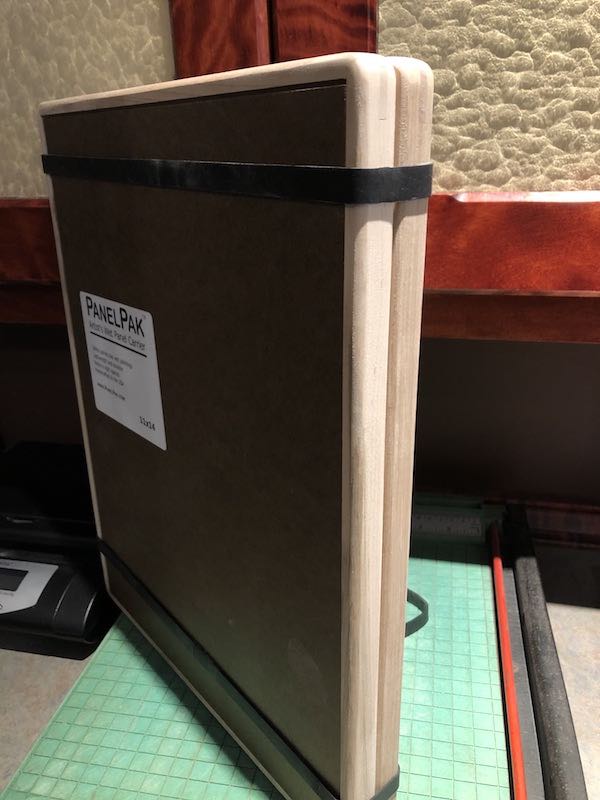
See also: Plein Air Easels, Pochade Boxes
The box type of wet panel carriers
Box type wet panel carriers can carry any number of paintings. Typically from 4 to 12. They consist of a box with slots to separate the paintings.
Cons:
- they are heavy
- you have to paint a lot of paintings all the same size (the multi size ones are even heavier)
The frame type of wet panel carriers
This is a single frame that is similar to a picture frame but that has a piece of wood in the inside of the frame to keep two paintings separate. They are designed to carry just two paintings back to back. This is my favourite way of transporting wet paintings.
Pros:
- you can carry many different sized panels, without adding too much weight. In a typical large drying box you have to have all the panels the same size
- it is a lot lighter than a wooden drying box
- it is much stronger than a plastic drying box whose sides can easily bend and damage a painting if pushed
Cons:
- you have to have two panels of the same size back to back for protection. If you finished one painting and are painting a second, your first painting is unprotected for the time you are painting the second painting.
I solve this problem by carrying at least two panel carriers of the same size (for four paintings), or by carrying an extra panel. Since I use gatorboard panels, this method hardly adds any extra weight.
Tips for selecting a wet panel carrier
- Make sure there is a good gap between the two paintings, so if you use thick paint there is no possibility of damage.
- If you paint on loose linen taped to a board, then you will need a very large gap. The board warps and the linen moves away from the board, so it is very easy for two paintings to touch.
Brand: PanelPak
Supplier: PanelPak (North America)
I have about 20 of these and can vouch for their quality. This is my preferred system now. However they suffer from the problem of paintings touching when painting on loose linen because the gap is too narrow.

Brand: Wet Panel Carrier
Supplier: Prolific Painter, LLC (North America)
Similar to the PanelPak.
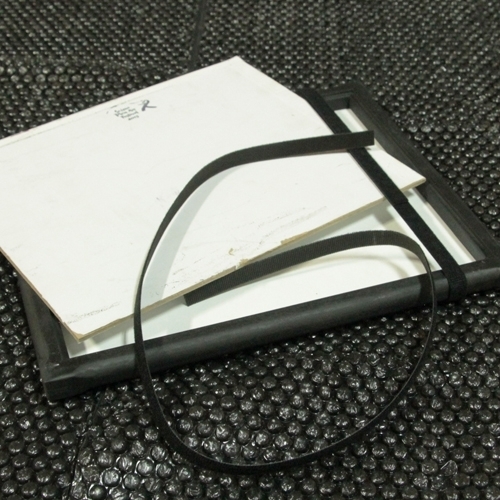
Brand: EzPak
Supplier: Artwork Essentials
The ezPak can carry two wet panels face to face up to 1/4″ in thickness. They also have some square ones which is a good idea. You can put either a rectangular canvas in it or a square one, or one of each. I think I prefer the rubber bands though to the brass latches. In my experience with brass latches, they can rotate and the painting can fall out. I haven’t used an EzPak so I don’t know if that is a problem or not.
Brand: Raymar
Manufacturer: Raymar
These are not well designed in my opinion. The sides flex and touch the paintings. The slots are too narrow. And it wastes space on the two outer slots which should hold a panel facing inwards, not outwards (where it can get damaged by flexing sides). As a result I chose to use a combination of home made super-light boxes, and the frame type of panel carriers.
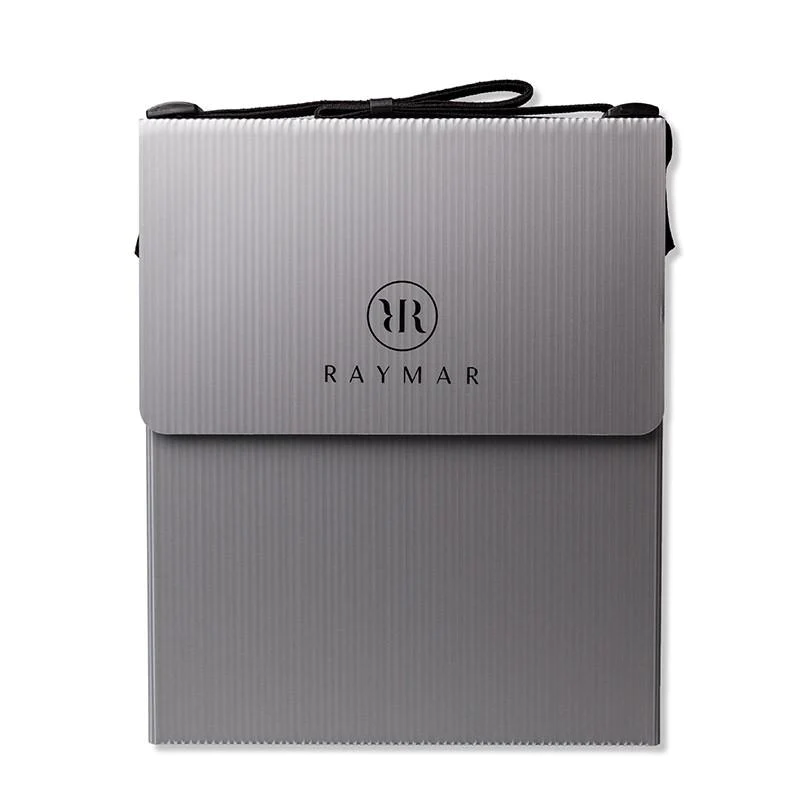
How to use wet panel carriers: the loose linen method
I like to use the larger size panel carriers such as 11″x14″ (28cm x 36cm) or 12″x16″ (30cm x 40cm). I get a piece of lightweight board that fits in the panel carrier. Then I cut several pieces of linen that are 2″(5cm) smaller than the board. In this way I can tape the linen to the board with drafting or masking tape.
For larger paintings I use the full area of the linen.
For smaller paintings I divide the linen up into small 6″x8″ (15cm x 20cm) areas using the drafting or masking tape as a border.
Home Made Wet Panel Carriers
See pages 38 to 41 in this guide, for instructions on how to make a super-light wet panel carrier using gatorboard.
I make the top wet panel carriers from 3/16” (0.5cm) gatorboard, which is sturdy and strong yet lightweight. I use plywood and small wooden dowels to make the runners inside the box to separate the panel from the palette, and duct tape to hold it all together. This makes a very light, yet strong, box.
For larger paintings, and for carrying my palette, I make the boxes out of luan (plywood), but the process for making them is the same.
You can make boxes in several sizes, depending on what type and size painting supports you use so you can carry a good variety of panels which is not always possible with other wet panel carriers. All you have to do is make sure the spacing between separators will fit the type of painting support you use (gatorboard, stretched canvas, loose canvas on board, etc)
Tips for loose linen
I have found in the heat, if you use loose linen or canvas taped to boards, that the linen will bend and touch the opposing painting before it has dried, ruining your painting.
Thank You
Thank you for taking the time to read this article. I hope you find it useful. If you would like to get free painting tips by email, please sign up for my free tips newsletter.
If you are interested in a structured approach for learning how to paint, take a look at my online painting classes.
Happy painting!
Barry John Raybould
Virtual Art Academy
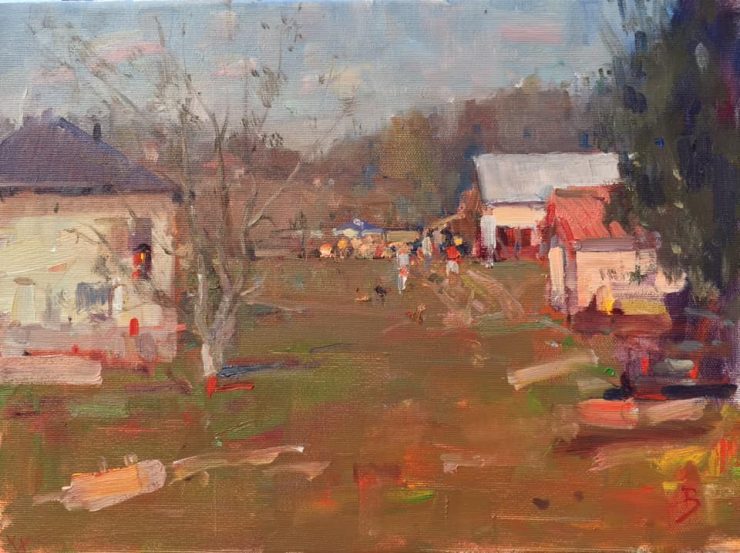
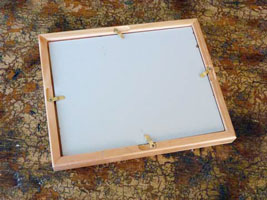
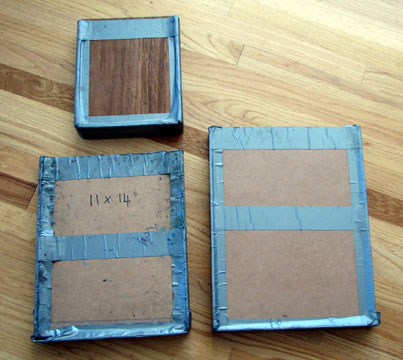
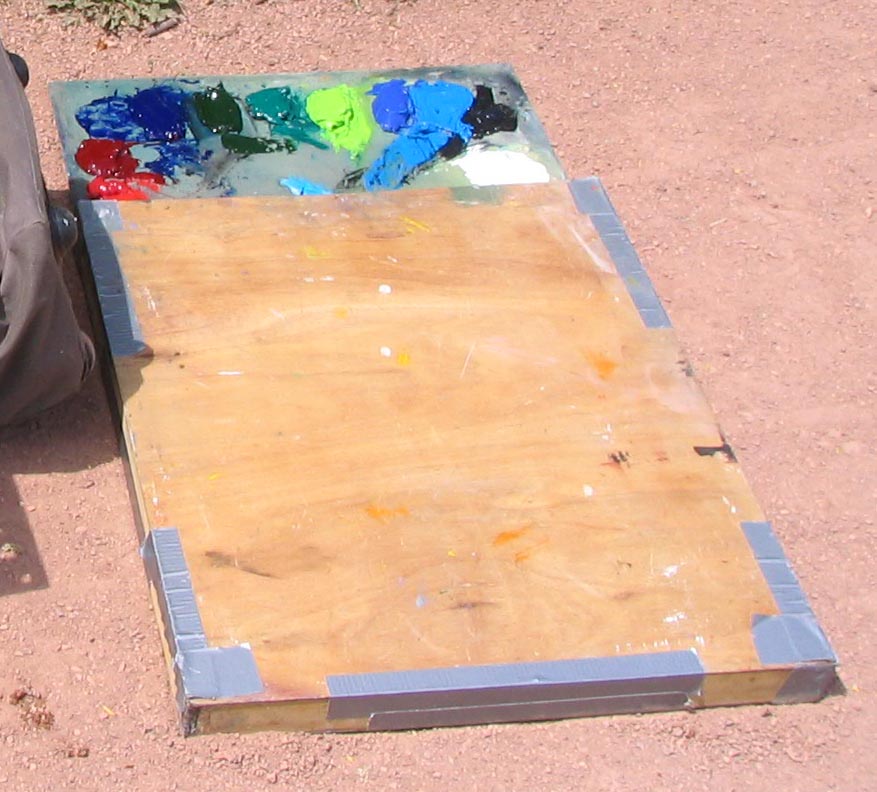
























Add comment